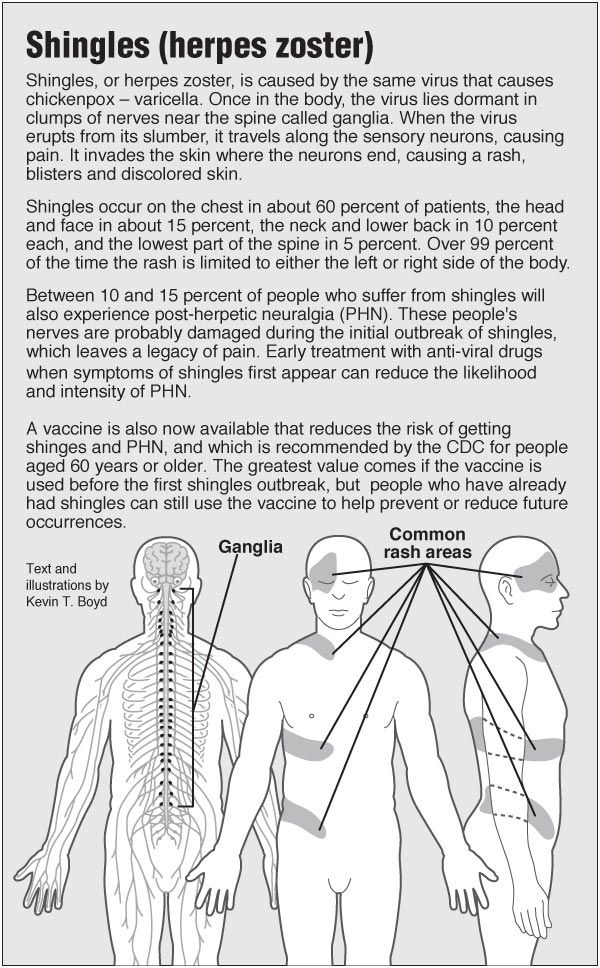Shingles Nerve Patterns: Nerve Paths That Shingles Follows and Their Impact on the Condition
What are the nerve paths that shingles follows? How do they impact the condition? Explore the details in this comprehensive article.
Understanding Shingles and its Causes
Shingles, also known as herpes zoster, is a disease caused by the reactivation of the varicella-zoster virus that leads to chickenpox. The virus can remain dormant in a person’s nerve cells for decades without presenting any symptoms. Shingles most commonly occurs in people over the age of 50, with about 1 in 3 people in the United States developing it during their lifetime. The main symptom of shingles is a painful rash on one side of the body that usually goes away after 2 to 4 weeks.
Nerve Paths and Dermatomes
The location of a shingles rash depends on which nerve in the body the virus spreads from. The rash typically appears on one side of the trunk or torso and is contained in one or two areas of the skin called dermatomes. Dermatomes are areas of skin where the sensation is supplied by a single spinal nerve.

There are 31 spinal nerves on each side of the body that help send information between the body and the spine. Each of these nerves is associated with a dermatome, except for the C1 spinal nerve in the neck. The virus usually spreads down the sensory nerve fibers that lead from the spinal cord to the skin, and once it reaches the end of these nerves, it leads to a rash that often appears in one or two nearby dermatomes.
Complications: Postherpetic Neuralgia and Motor Nerve Damage
As the herpes zoster virus travels along the sensory nerves, it can cause damage and inflammation that leads to pain, even after the rash disappears. The most common long-term complication of shingles is a condition called postherpetic neuralgia, which refers to pain or intense itchiness that lasts after the shingles rash heals. Postherpetic neuralgia affects an estimated 10 to 18 percent of people with shingles, and while most recover within a year, in some cases, it can be permanent.
The herpes zoster virus can also infect the nerves that help move the muscles, leading to a condition called segmental zoster paresis, which causes weakness in the muscles around the shingles rash. This condition affects approximately 0.5 to 5 percent of people with shingles.

Cranial Nerve Damage and Ramsay Hunt Syndrome
In some cases, the herpes zoster virus can affect one of the major nerves in the head, called cranial nerves. Less than 1 percent of shingles cases affect cranial nerve VII (the facial nerve) and lead to a condition called Ramsay Hunt syndrome. This syndrome can cause symptoms such as facial paralysis on one side, ear pain, blisters in the ear, changes in taste in the front two-thirds of the tongue, dry eyes, hearing loss, vertigo, and tinnitus.
Treatment for Postherpetic Neuralgia
Damaged sensory nerves can lead to postherpetic neuralgia, where pain persists after the rash disappears. Four types of medications are used to treat the pain from postherpetic neuralgia, and sometimes a combination of these medications is used:
- Anticonvulsants, such as gabapentin and pregabalin, which are approved by the FDA to treat postherpetic neuralgia.
- Antidepressants, including tricyclic antidepressants and serotonin-norepinephrine reuptake inhibitors (SNRIs).
- Topical treatments, such as lidocaine patches and capsaicin cream.
- Opioid painkillers, which are used in more severe cases of postherpetic neuralgia.
The Importance of Understanding Shingles Nerve Patterns
Understanding the nerve paths that shingles follows and the potential complications associated with the condition is important for effective diagnosis and management. By knowing how the virus spreads and the impact it can have on different nerves, healthcare providers can better recognize and treat shingles, as well as address the long-term consequences of the disease.
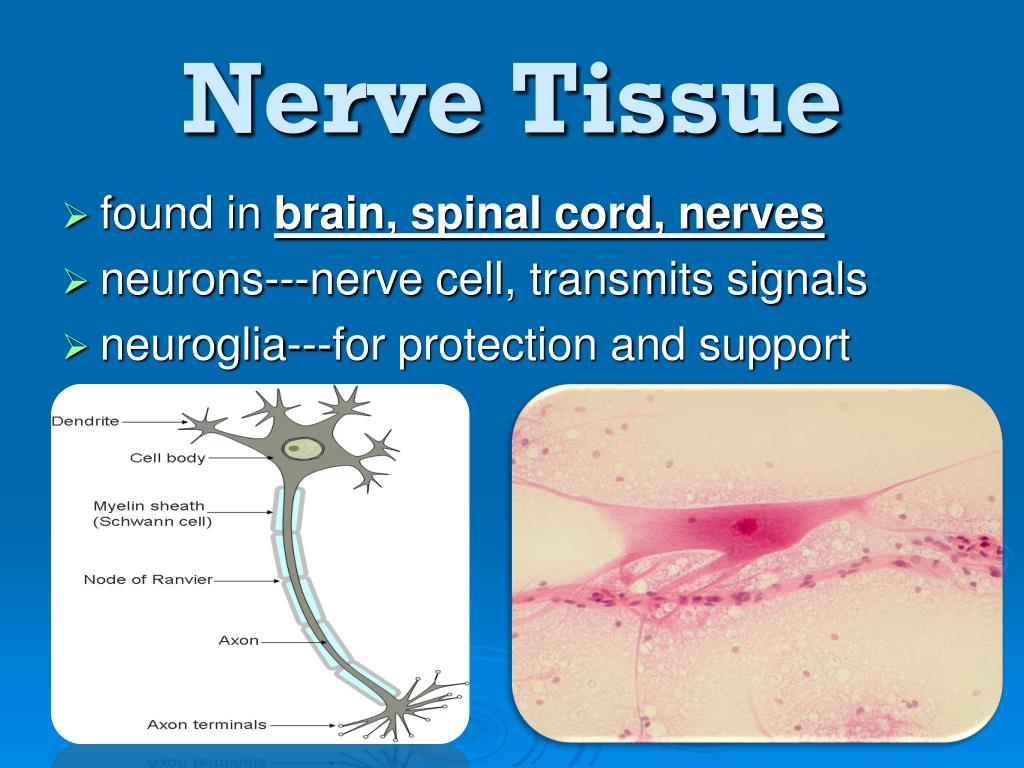
Conclusion
Shingles is a complex condition that is caused by the reactivation of the varicella-zoster virus, which can have a significant impact on the body’s nerve pathways. By understanding the specific nerve patterns that shingles follows and the potential complications it can cause, healthcare providers can better diagnose, treat, and manage this condition, ultimately improving outcomes for patients.
Nerve Paths That Shingles Follows, Their Impact on the Condition
Shingles, also called herpes zoster, is a disease caused by a reactivation of the varicella-zoster virus that leads to chickenpox. The virus can remain dormant in your nerve cells for decades without presenting any symptoms.
Shingles most commonly occurs in people over the age of 50. About 1 in 3 people in the United States will develop it in their life. The main symptom of shingles is a painful rash on one side of your body that usually goes away after 2 to 4 weeks.
The rash can appear on any part of your body, but it typically appears on one side of your trunk or torso. The location of a shingles rash depends on which nerve in your body the virus spreads from. Usually, the rash is contained in one or two areas of your skin called dermatomes.
Keep reading as we take a look at how and why shingles follows along nerve paths.
Shingles is caused by a reactivation of the virus that causes chickenpox. Only people who’ve had chickenpox or chickenpox vaccines can develop shingles. Having a chickenpox vaccine can lead to shingles because the vaccine contains the virus that causes chickenpox.
Only people who’ve had chickenpox or chickenpox vaccines can develop shingles. Having a chickenpox vaccine can lead to shingles because the vaccine contains the virus that causes chickenpox.
Shingles isn’t contagious, but people who have not had chickenpox can develop chickenpox if they come in contact with open blisters of somebody with shingles.
After your body fights off a chickenpox infection, the herpes zoster virus remains dormant in your cranial nerves and spinal ganglia until it becomes reactivated. Spinal ganglia are nerve cells that connect your spinal cord to nerves in your body and limbs.
The virus reactivates when your immune system is no longer able to suppress it. Reactivation most commonly occurs in older adults because the immune system tends to get weaker with age, as well as in people with suppressed immune systems.
Once the virus is active, it usually spreads down sensory nerve fibers that lead from your spinal cord to your skin. These nerves carry sensory information like feelings of pain, itchiness, or pressure from your skin to your spinal cord and brain.
Once the virus gets to the end of these sensory nerves, it reaches your skin and usually leads to a rash. This rash often shows up in one or two nearby areas of skin called dermatomes.
You have 31 spinal nerves on each side of your body that help send information between your body and spine. Each of these nerves is associated with a dermatome except for the C1 spinal nerve in your neck.
A dermatome is an area of your skin where the sensation is supplied by one spinal nerve.
For example, the C5 spinal nerve found on the right side of your body is responsible for delivering sensory information from your right collarbone and upper shoulder to your spinal cord and brain. All the skin in this region is one dermatome.
Shingles rashes tend to form along one or two dermatomes on one side of your body. Their location depends on which nerve the virus spreads from. The rash doesn’t cross the midline of your body because each spinal nerve supplies sensory information only for the left or right side of your body.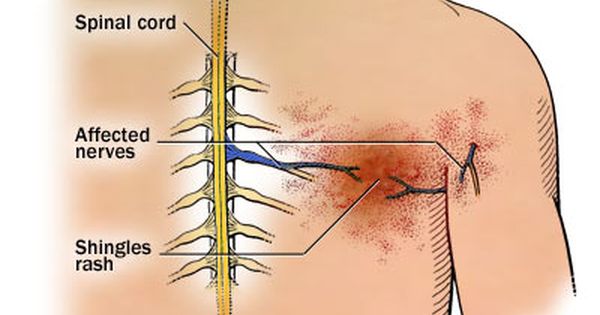
As the herpes zoster virus travels along your sensory nerves, it can cause damage and inflammation that leads to pain, even after your rash disappears.
Postherpetic neuralgia
The most common long-term complication of shingles is a condition called postherpetic neuralgia.
Postherpetic neuralgia refers to pain or intense itchiness that lasts after a shingles rash heals. It’s estimated that 10 to 18 percent of people with shingles develop postherpetic neuralgia.
Most people recover from postherpetic neuralgia within a year, but in some cases, it can be permanent.
Motor nerve damage
The herpes zoster virus can also infect the nerves that help you move your muscles. It’s thought that about 0.5 to 5 percent of people with shingles develop a condition called segmental zoster paresis. This condition leads to weakness in the muscles around the shingles rash.
Cranial nerve damage
In some cases, the herpes zoster virus affects one of the major nerves in your head called cranial nerves.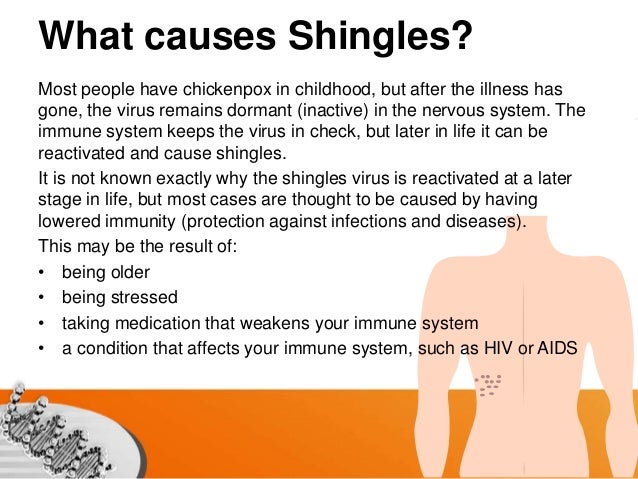 Less than 1 percent of shingles cases affect cranial nerve VII (facial nerve) and lead to a condition called Ramsay Hunt syndrome.
Less than 1 percent of shingles cases affect cranial nerve VII (facial nerve) and lead to a condition called Ramsay Hunt syndrome.
This syndrome can cause symptoms such as:
- facial paralysis on one side
- ear pain
- blisters in your ear
- changes in taste in the front two-thirds of your tongue
- dry eyes
- hearing loss
- vertigo
- tinnitus
Damaged sensory nerves can lead to a condition called postherpetic neuralgia, in which pain persists after your rash disappears.
Four types of medications are used to treat pain from postherpetic neuralgia. Sometimes, a combination of medications is used.
Anticonvulsants
Anticonvulsants, such as gabapentin and pregabalin, are approved by the Food and Drug Administration (FDA) to treat postherpetic neuralgia. These drugs bind to calcium channels and influence neurotransmitter release to relieve pain.
Antidepressants
A wide range of antidepressants may be used at low dosages to help manage pain.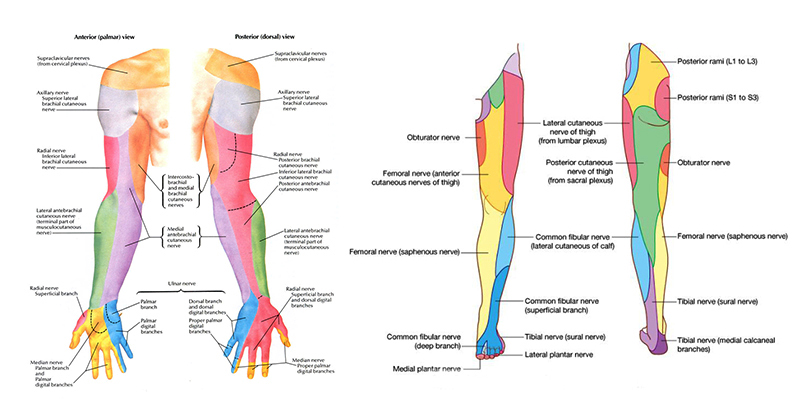 One group of antidepressants commonly used for this purpose is tricyclic antidepressants. These drugs inhibit the reuptake of serotonin and norepinephrine.
One group of antidepressants commonly used for this purpose is tricyclic antidepressants. These drugs inhibit the reuptake of serotonin and norepinephrine.
Opioids
Opioid medications are effective at treating nerve pain, but doctors are often reluctant to prescribe them unless other options fail. Opioids are often the last resort because of their potential to lead to dependence or overdose. Prescription opioids include:
- hydrocodone
- oxymorphone
- morphine
- codeine
- fentanyl
Topical local anesthetics
Two types of creams are commonly used to help manage nerve pain. Lidocaine is FDA-approved specifically for treating postherpetic neuralgia. Capsaicin cream is available over the counter and has been found to be somewhat effective, but many people experience burning pain while putting it on.
Postherpetic neuralgia can be very painful, but here are some things you can do at home to lessen your discomfort:
- wear comfortable clothing made from cotton or silk to reduce irritation
- apply an ice pack wrapped in a towel to the sore area
- eat a balanced diet
- get plenty of rest
- minimize stress
- exercise regularly
The same virus that causes chickenpox can also cause shingles. The virus can remain dormant in your nerves for decades after chickenpox infection before becoming active again.
The virus can remain dormant in your nerves for decades after chickenpox infection before becoming active again.
Once reactivated, the virus spreads to your skin by traveling down your nerves. The area that your rash appears on depends on which nerve the virus travels from.
Shingles is thought to appear when your immune system is no longer able to suppress the virus. Keeping your immune system healthy by eating a balanced diet, exercising regularly, and minimizing stress may help reduce your chance of developing shingles. You can also get one of two FDA-approved shingles vaccines.
Nerve Paths That Shingles Follows, Their Impact on the Condition
Shingles, also called herpes zoster, is a disease caused by a reactivation of the varicella-zoster virus that leads to chickenpox. The virus can remain dormant in your nerve cells for decades without presenting any symptoms.
Shingles most commonly occurs in people over the age of 50. About 1 in 3 people in the United States will develop it in their life. The main symptom of shingles is a painful rash on one side of your body that usually goes away after 2 to 4 weeks.
The main symptom of shingles is a painful rash on one side of your body that usually goes away after 2 to 4 weeks.
The rash can appear on any part of your body, but it typically appears on one side of your trunk or torso. The location of a shingles rash depends on which nerve in your body the virus spreads from. Usually, the rash is contained in one or two areas of your skin called dermatomes.
Keep reading as we take a look at how and why shingles follows along nerve paths.
Shingles is caused by a reactivation of the virus that causes chickenpox. Only people who’ve had chickenpox or chickenpox vaccines can develop shingles. Having a chickenpox vaccine can lead to shingles because the vaccine contains the virus that causes chickenpox.
Shingles isn’t contagious, but people who have not had chickenpox can develop chickenpox if they come in contact with open blisters of somebody with shingles.
After your body fights off a chickenpox infection, the herpes zoster virus remains dormant in your cranial nerves and spinal ganglia until it becomes reactivated. Spinal ganglia are nerve cells that connect your spinal cord to nerves in your body and limbs.
Spinal ganglia are nerve cells that connect your spinal cord to nerves in your body and limbs.
The virus reactivates when your immune system is no longer able to suppress it. Reactivation most commonly occurs in older adults because the immune system tends to get weaker with age, as well as in people with suppressed immune systems.
Once the virus is active, it usually spreads down sensory nerve fibers that lead from your spinal cord to your skin. These nerves carry sensory information like feelings of pain, itchiness, or pressure from your skin to your spinal cord and brain.
Once the virus gets to the end of these sensory nerves, it reaches your skin and usually leads to a rash. This rash often shows up in one or two nearby areas of skin called dermatomes.
You have 31 spinal nerves on each side of your body that help send information between your body and spine. Each of these nerves is associated with a dermatome except for the C1 spinal nerve in your neck.
A dermatome is an area of your skin where the sensation is supplied by one spinal nerve.
For example, the C5 spinal nerve found on the right side of your body is responsible for delivering sensory information from your right collarbone and upper shoulder to your spinal cord and brain. All the skin in this region is one dermatome.
Shingles rashes tend to form along one or two dermatomes on one side of your body. Their location depends on which nerve the virus spreads from. The rash doesn’t cross the midline of your body because each spinal nerve supplies sensory information only for the left or right side of your body.
As the herpes zoster virus travels along your sensory nerves, it can cause damage and inflammation that leads to pain, even after your rash disappears.
Postherpetic neuralgia
The most common long-term complication of shingles is a condition called postherpetic neuralgia.
Postherpetic neuralgia refers to pain or intense itchiness that lasts after a shingles rash heals. It’s estimated that 10 to 18 percent of people with shingles develop postherpetic neuralgia.
Most people recover from postherpetic neuralgia within a year, but in some cases, it can be permanent.
Motor nerve damage
The herpes zoster virus can also infect the nerves that help you move your muscles. It’s thought that about 0.5 to 5 percent of people with shingles develop a condition called segmental zoster paresis. This condition leads to weakness in the muscles around the shingles rash.
Cranial nerve damage
In some cases, the herpes zoster virus affects one of the major nerves in your head called cranial nerves. Less than 1 percent of shingles cases affect cranial nerve VII (facial nerve) and lead to a condition called Ramsay Hunt syndrome.
This syndrome can cause symptoms such as:
- facial paralysis on one side
- ear pain
- blisters in your ear
- changes in taste in the front two-thirds of your tongue
- dry eyes
- hearing loss
- vertigo
- tinnitus
Damaged sensory nerves can lead to a condition called postherpetic neuralgia, in which pain persists after your rash disappears.
Four types of medications are used to treat pain from postherpetic neuralgia. Sometimes, a combination of medications is used.
Anticonvulsants
Anticonvulsants, such as gabapentin and pregabalin, are approved by the Food and Drug Administration (FDA) to treat postherpetic neuralgia. These drugs bind to calcium channels and influence neurotransmitter release to relieve pain.
Antidepressants
A wide range of antidepressants may be used at low dosages to help manage pain. One group of antidepressants commonly used for this purpose is tricyclic antidepressants. These drugs inhibit the reuptake of serotonin and norepinephrine.
Opioids
Opioid medications are effective at treating nerve pain, but doctors are often reluctant to prescribe them unless other options fail. Opioids are often the last resort because of their potential to lead to dependence or overdose. Prescription opioids include:
- hydrocodone
- oxymorphone
- morphine
- codeine
- fentanyl
Topical local anesthetics
Two types of creams are commonly used to help manage nerve pain. Lidocaine is FDA-approved specifically for treating postherpetic neuralgia. Capsaicin cream is available over the counter and has been found to be somewhat effective, but many people experience burning pain while putting it on.
Lidocaine is FDA-approved specifically for treating postherpetic neuralgia. Capsaicin cream is available over the counter and has been found to be somewhat effective, but many people experience burning pain while putting it on.
Postherpetic neuralgia can be very painful, but here are some things you can do at home to lessen your discomfort:
- wear comfortable clothing made from cotton or silk to reduce irritation
- apply an ice pack wrapped in a towel to the sore area
- eat a balanced diet
- get plenty of rest
- minimize stress
- exercise regularly
The same virus that causes chickenpox can also cause shingles. The virus can remain dormant in your nerves for decades after chickenpox infection before becoming active again.
Once reactivated, the virus spreads to your skin by traveling down your nerves. The area that your rash appears on depends on which nerve the virus travels from.
Shingles is thought to appear when your immune system is no longer able to suppress the virus. Keeping your immune system healthy by eating a balanced diet, exercising regularly, and minimizing stress may help reduce your chance of developing shingles. You can also get one of two FDA-approved shingles vaccines.
Keeping your immune system healthy by eating a balanced diet, exercising regularly, and minimizing stress may help reduce your chance of developing shingles. You can also get one of two FDA-approved shingles vaccines.
Postherpetic neuralgia – causes, symptoms, diagnosis and treatment
- INVITRO
- Library
- Directory of diseases
- Postherpetic…
Chicken pox
Herpes
15828
17 September
Postherpetic neuralgia: causes, symptoms, diagnosis and treatment.
Definition
Postherpetic neuralgia is pain or abnormal sensory sensations associated with damage to the nervous system by the varicella zoster virus.

Causes of postherpetic neuralgia
After suffering chicken pox (chickenpox), the human herpes virus type 3 – Varicella zoster virus ( Varicella zoster ) – from rashes on the skin and mucous membranes, it can move to sensitive ganglia (nodes consisting of clusters of neurons) of the spinal nerves of the thoracic, lumbar levels or the trigeminal nerve. There, the virus can remain in a latent (inactive) state for decades. With a decrease in immunity (for example, against the background of viral diseases, chemotherapy, oncological diseases, therapy with glucocorticosteroid hormones for systemic connective tissue diseases (rheumatic diseases)) the virus can become activated and cause the development of herpes zoster (shingles, Herpes zoster ) or trigeminal neuralgia.The disease begins with unilateral pain, burning sensation, increased skin sensitivity, after which, sometimes after 1-2 weeks, redness appears, and then blistering rashes on the skin.
 In 50% of patients, rashes are localized on the trunk (as a rule, along the intercostal spaces at the level of the thoracic spine, sometimes in the lumbar region, sacrum), in 20% – on the head (with damage to the trigeminal nerve, damage to the eyes, ears is possible), in 15% – on the hands, and 15% – on the legs. In most cases, over time, the pain goes away on its own – recovery occurs after 2-3 weeks, but sometimes (in about 20% of patients) a complication of herpes zoster develops – postherpetic neuralgia.
In 50% of patients, rashes are localized on the trunk (as a rule, along the intercostal spaces at the level of the thoracic spine, sometimes in the lumbar region, sacrum), in 20% – on the head (with damage to the trigeminal nerve, damage to the eyes, ears is possible), in 15% – on the hands, and 15% – on the legs. In most cases, over time, the pain goes away on its own – recovery occurs after 2-3 weeks, but sometimes (in about 20% of patients) a complication of herpes zoster develops – postherpetic neuralgia.Postherpetic neuralgia is rarely seen in children and young adults, but its frequency increases significantly in old age.
The real prevalence of postherpetic neuralgia is unknown, since there is no single point of view on the time interval between rashes, the onset of pain, and the duration of the pain syndrome.
Classification of postherpetic neuralgia
0029 Herpes zoster .
- Acute herpetic neuralgia in which the pain lasts up to 30 days from the onset of the rash.

- Subacute herpetic neuralgia lasting 30-120 days after onset of rash.
- Postherpetic neuralgia in which pain persists for more than 120 days after the onset of the rash.
Most patients recover completely within one year of the onset of pain, but some patients experience pain for years.
Symptoms of postherpetic neuralgia
The main complaint of patients is pain. It is characterized by varying intensity and frequency – from mild to extremely painful, from short-term to permanent. With herpes zoster, pain can spread beyond the localization of the rash. In the clinical picture of postherpetic neuralgia, the following types of pain can be distinguished:
- constant pain that patients describe as dull, pressing or burning;
- paroxysmal (paroxysmal) pain that comes on suddenly, sharp, shooting, stabbing;
- allodynia – pain that occurs in response to even very weak stimuli that under normal circumstances do not cause pain – for example, to a light touch with a cold hand.

Often patients note constant fatigue, lack of appetite, decreased mood, sleep disturbances.
Some patients complain of intense itching, which is localized, as a rule, in the head and neck.
Diagnosis of postherpetic neuralgia
At the onset of herpes zoster, when patients are only concerned about pain, the doctor may suspect heart disease, intercostal neuralgia, osteochondrosis. However, with the appearance of rashes, the diagnosis becomes obvious.
The persistence of the pain syndrome after resolution of the rash indicates postherpetic neuralgia.
Instrumental and laboratory diagnostics, as a rule, are not carried out.
In atypical cases, a serological test 256 may be prescribed in combination with test No. 257 (IgM antibodies) for the diagnosis of chickenpox. In addition, these studies may be required to assess immunity to the virus.
Antibodies of the IgG class to the Varicella-Zoster virus (Varicella-Zoster Virus IgG, anti-VZV IgG, antibodies of the IgG class to the varicella-zoster virus and shingles)
Synonyms: Blood test for antibodies to the chickenpox virus; Chicken pox; Human herpes virus type 3; HBV-3 type; varicellae-zoster virus; Herpes zoster.

chickenpox; Human h…
Up to 4 business days
Available with house call
RUB 965
Add to cart
Antibodies of the IgM class to the Varicella-Zoster virus (Varicella-Zoster Virus IgM, anti-VZV IgM, antibodies of the IgM class to the varicella-zoster virus and herpes zoster)
Synonyms: Blood test for antibodies to the chickenpox virus; Chicken pox; Human herpes virus type 3; HBV-3 type; varicellae-zoster virus; Herpes zoster.
chickenpox; Human herp…
Up to 1 working day
Available with house call
1 050 RUB
Add to cart
Which doctors to contact
Management of patients with postherpetic neuralgia is carried outneurologists
,
internists
, general practitioners, rarely infectious disease specialists.

Treatment of postherpetic neuralgia
Early antiviral therapy, especially in the first days after the onset of rashes, can reduce the severity or even prevent the development of postherpetic neuralgia.
In the treatment of herpes zoster, various painkillers are also used. Note that the more severe the period of rashes, the greater the likelihood of chronic pain.Effective pain relief can positively influence the further course of postherpetic neuralgia.
Strictly under the supervision of a doctor! In addition to traditional analgesics, anticonvulsants (anticonvulsants), tricyclic antidepressants are used to relieve pain at the stage of herpes zoster and postherpetic neuralgia.
To restore the functions of the affected nerve, neurotropic vitamin preparations of group B are prescribed.Complications
Like any chronic pain syndrome, the course of postherpetic neuralgia is complicated by a significant decrease in the quality of life of patients.
 Most of them note depressed mood, irritability, disturbed night sleep, general weakness.
Most of them note depressed mood, irritability, disturbed night sleep, general weakness.Prevention of postherpetic neuralgia
Vaccination may be recommended for the prevention of herpes zoster and postherpetic neuralgia in people over 50 years of age, especially those at risk of developing the disease. Vaccines against Herpes zoster are not included in the National Immunization Schedule, and the decision on the advisability of their use in each individual patient is made by the doctor. In some cases, vaccination may be recommended for persons under 50 years of age.
Sources:
- Federal clinical guidelines for the management of patients with herpes zoster. Russian Society of Dermatovenerologists and Cosmetologists. 2015.
- Mendelevich E.G., Mendelevich S.V. Postherpetic neuralgia: therapeutic and prophylactic aspects and therapy with pregabalin // Neurology, neuropsychiatry, psychosomatics. 2014(2). pp.
 57-61. DOI.
57-61. DOI.
IMPORTANT!
The information in this section should not be used for self-diagnosis or self-treatment. In case of pain or other exacerbation of the disease, only the attending physician should prescribe diagnostic tests. For diagnosis and proper treatment, you should contact your doctor.
For a correct assessment of the results of your analyzes in dynamics, it is preferable to do studies in the same laboratory, since different laboratories may use different research methods and units of measurement to perform the same analyzes.Recommendations
Tuberculosis of the spine
817
July 13
Chronic cerebral ischemia
841
July, 12
Hemoblastoses (malignant diseases of the hematopoietic system, blood cancer)
802
08 July
Show more
Herpes
Poliomyelitis
Trigeminal neuralgia (facial or trigeminal neuralgia, painful tic, Fothergill’s disease, tic douloureux)
Trigeminal neuralgia: causes, symptoms, diagnosis and treatment.

More
Herpes
Paralyn
Tremor
Amnesia
blindness
Distracted sclerosis
multiple sclerosis: causes of occurrence, symptoms, diagnosis and methods of treatment.
More
Cheilite
Lupus erythematosus
Tumor
Herpes
Erosion
Lip cancer
Lip cancer: causes, symptoms, diagnosis and treatment.
More
Encephalitis
Herpes
Hepatitis
Pancreatitis
Herpes
Herpes: causes, symptoms, diagnosis and treatment.
More
Cold
Angina
Herpes
Cold
Cold: causes, symptoms, diagnosis and treatment.
More
Postherpetic trigeminal neuralgia – prevention and treatment options | Kamchatnov P.
 R., Evzelman M.A., Chugunov A.V.
R., Evzelman M.A., Chugunov A.V.Herpetic ganglionitis of the gasser ganglion (synonyms: “shingles”, “herpes zoster”) is a fairly common infectious disease, manifested by the occurrence of serous rashes in the region of innervation of individual branches of the trigeminal nerve. It is caused by the Varicella zoster virus from the group of herpes viruses. According to the results of epidemiological studies, the information obtained from the analysis of statistical data on outpatient medical care visits shows that approximately 500,000 cases of the disease are registered in the United States annually [2]. The incidence is about 2–3 cases per 1000 people per year [3]. It has been convincingly proven that the incidence of herpes zoster increases with age. Thus, in a population older than 80 years, its frequency is already 10 per 100 people per year [5].
The disease is based on the reactivation of the Varicella zoster virus, which is capable of persisting in the ganglia of the posterior horn for a long period of time.
 Accordingly, in relation to the trigeminal nerve, the area of \u200b\u200btheir location is the Gasser node. In the event of certain conditions favorable for the activation of the virus, a disease develops. It is believed that risk factors for its reactivation are advanced age or, conversely, infection in childhood (up to 18 months), a state of immunosuppression of various origins (acquired immunodeficiency, oncological diseases, immunosuppressive therapy), intrauterine contact with the varicella-zoster virus. The disease is realized in conditions of reduced cellular immunity due to various reasons.
Accordingly, in relation to the trigeminal nerve, the area of \u200b\u200btheir location is the Gasser node. In the event of certain conditions favorable for the activation of the virus, a disease develops. It is believed that risk factors for its reactivation are advanced age or, conversely, infection in childhood (up to 18 months), a state of immunosuppression of various origins (acquired immunodeficiency, oncological diseases, immunosuppressive therapy), intrauterine contact with the varicella-zoster virus. The disease is realized in conditions of reduced cellular immunity due to various reasons.The herpes virus can be transmitted from person to person, in particular, in cases where the individual did not tolerate chicken pox or was not promptly vaccinated for this infection. The disease is not prone to recurrence. It is believed that relapses occur in about 6% of patients, and the period from the first episode to relapse can be several decades [5]. Clinical experience suggests that a relapse may be due to a disease that has arisen in a patient, the presence of which negatively affects the state and nature of the immune response.

Clinical manifestations
The development of the disease is preceded by a prodromal period, which is characterized by fever, nausea, diffuse headache, which, growing, can be observed for several days. Characteristic is the increase in local pain, which is neuropathic in nature, as well as an unpleasant burning, stabbing tint of itching, which can be accompanied by allodynia, hyperesthesia and hyperpathia. As a rule, this kind of pain is localized in the area of subsequent rashes and is limited to the zone of one or more corresponding dermatomes. In the vast majority of cases, these manifestations are unilateral, although in some patients they can spread to the opposite half of the body [8]. The pain can be extremely intense, which often simulates a number of somatic diseases, in particular pleurisy, acute myocardial infarction, renal colic. The defeat of the gasser node can cause difficulties in differential diagnosis with dental diseases, damage to the paranasal sinuses.

Against the background of these symptoms, hyperemia and multiple maculopapular rashes appear, which subsequently become vesicular. Vesicles are filled with transparent colorless serous contents. In cases of a favorable course of the disease, rashes can be localized only in a separate part of the dermatome. The appearance of new rashes is possible for 5-7 days. A few days after the appearance of the first rashes, their contents become cloudy (the so-called pustulation stage). Subsequently, in the absence of complications, dry crusts form at the site of the existing rashes, which fall off after 2-3 weeks. In these areas, cicatricial changes or areas of altered pigmentation may remain. The disease, as a rule, has a favorable prognosis, is characterized by a monophasic course and has a slight tendency to recurrence.
Diagnosis can be difficult until characteristic lesions appear. After their occurrence, the correct diagnosis is usually not difficult. Confirmation of the diagnosis is possible by conducting a polymerase chain reaction, which makes it possible to detect DTCs of the Varicella zoster virus in the contents of existing rashes.

Complications
Among the possible complications, it should be noted local infectious lesions caused by infection of the damaged skin with streptococcus or staphylococcus, up to the development of cellulitis. When the ophthalmic branch of the trigeminal nerve is involved in the pathological process, keratitis may develop, which can lead to serious consequences in the form of corneal damage, up to monocular blindness. Rarely, there are lesions of a herpetic infection of the brain tissue (with the development of encephalitis) or its membranes with the occurrence of serous meningitis.
One of the most frequent and rather severe complications of gasser ganglionitis caused by herpetic infection is postherpetic neuralgia. The pathogenesis of this condition is quite complex and includes at least two main mechanisms [5]. First, an increase in the excitability of primary afferents due to damage to peripheral neurons takes part in its development. As a result, there is an excessive excitability of nociceptors and, as a consequence, the formation of central sensitization.
 Clinically, such a combination of pathophysiological processes is manifested by the occurrence of pain and the development of allodynia. Secondly, due to the degeneration of nociceptive neurons, deafferentation of the upstream sensory systems occurs, causing their hyperactivity. As a result of this, the formation of pain is observed, which, however, is not accompanied by allodynia. According to the authors, in one patient, a combination of both mechanisms is possible, which is the reason for the peculiarity of the pain syndrome and differences in the effectiveness of the therapy.
Clinically, such a combination of pathophysiological processes is manifested by the occurrence of pain and the development of allodynia. Secondly, due to the degeneration of nociceptive neurons, deafferentation of the upstream sensory systems occurs, causing their hyperactivity. As a result of this, the formation of pain is observed, which, however, is not accompanied by allodynia. According to the authors, in one patient, a combination of both mechanisms is possible, which is the reason for the peculiarity of the pain syndrome and differences in the effectiveness of the therapy.This pathological condition is characterized by all clinical characteristics typical for neuropathic pain syndrome. Establishing a diagnosis is possible if the pain persists for at least 30 days after the onset of complete healing of existing rashes.
Risk factors for the development of postherpetic trigeminal neuralgia are age over 60 years, female gender, the presence of a prodromal period, multiple rashes, and a high intensity of pain at the onset of the disease [6].
 According to the authors of the study, pain syndrome of moderate intensity, not accompanied by subsequent development of postherpetic neuralgia, is observed in younger patients and is probably associated with extensive local tissue damage and inflammation in the presence of multiple lesions. The importance of the age factor as an important predictor of the development of pain syndrome should be emphasized in patients who had herpes zoster at the age of 9 years.0 years, postherpetic neuralgia occurs in about half of cases [5]. An unfavorable prognostic factor for the development of pain syndrome is the detection of the Varicella zoster virus in the blood.
According to the authors of the study, pain syndrome of moderate intensity, not accompanied by subsequent development of postherpetic neuralgia, is observed in younger patients and is probably associated with extensive local tissue damage and inflammation in the presence of multiple lesions. The importance of the age factor as an important predictor of the development of pain syndrome should be emphasized in patients who had herpes zoster at the age of 9 years.0 years, postherpetic neuralgia occurs in about half of cases [5]. An unfavorable prognostic factor for the development of pain syndrome is the detection of the Varicella zoster virus in the blood.As with the vast majority of chronic neuropathic pain syndromes, a combination of psychosocial factors plays an extremely important role in the development of postherpetic neuralgia. The presence of previous depressive and anxiety disorders, insufficient social adaptation of the patient, violation of social ties, living outside the family, etc.
 may increase the likelihood of developing a pain syndrome.
may increase the likelihood of developing a pain syndrome.The course of postherpetic neuralgia can be different. In some patients, there is a significant regression or complete disappearance of the existing pain syndrome over a period of about six months. Unfortunately, a less benign course is possible, when the pain syndrome becomes chronic and leads to disability of the patient and a sharp decrease in his quality of life [10]. The risk of severe pain syndrome increases with age, so, in more than 5% of elderly patients, intense pain persists for more than 12 months. [5]. The features of the course of the disease may be associated with differences in the pathogenesis of the pain syndrome, the direction and intensity of compensatory reactions of the body, as well as the effectiveness and adequacy of the therapy, in particular, its timely start.
Quite often, along with the development of postherpetic neuralgia, patients experience motor disorders in the form of peripheral paresis of the cranial nerves (most often, the facial nerve) [1].
 This form of herpes infection is known as Ramsay Hunt syndrome. There are no convincing data on the prognostic significance of motor disorders in relation to the frequency and duration of the pain syndrome.
This form of herpes infection is known as Ramsay Hunt syndrome. There are no convincing data on the prognostic significance of motor disorders in relation to the frequency and duration of the pain syndrome.Treatment
The most effective treatment for patients with herpes zoster is the use of antiviral drugs. At present, the high efficacy of valaciclovir (Virdel, the pharmaceutical company “Stada”) has been convincingly demonstrated in the treatment of patients with herpes zoster, the recommendation to apply the 50-50-50 rule is of interest [8]. It has been shown that the maximum effectiveness of antiviral therapy is observed when it is started no later than 50 hours after the onset of rashes, in patients over the age of 50 years and in the presence of at least 50 elements of rashes. Subject to this rule, it is possible to reduce the healing time for existing skin lesions, as well as reduce the risk of developing postherpetic neuralgia [9]. The authors of this study demonstrated that in this situation, all the applied criteria for assessing the effectiveness of therapy (the likelihood of developing pain syndrome, the timing of its onset, pain intensity) testified to the undoubted advantage of timely initiation of valaciclovir therapy and an adequate choice of indications for its implementation.
 A later start of antiviral therapy (more than 72 hours after the appearance of rashes) provides a slight reduction in the healing time [11]. The use of antiviral drugs in the case of a small number of rashes (less than 50) is also not associated with a significant decrease in the likelihood of developing neuropathic pain syndrome.
A later start of antiviral therapy (more than 72 hours after the appearance of rashes) provides a slight reduction in the healing time [11]. The use of antiviral drugs in the case of a small number of rashes (less than 50) is also not associated with a significant decrease in the likelihood of developing neuropathic pain syndrome.Probably, non-compliance with this rule led to the fact that the results of a systematic review on the study of the results of antiviral therapy could not confirm its effectiveness in preventing the development of neuralgia after 4 and 6 months. after the appearance of rashes [7]. These data indicate the need for proper selection of patients to achieve the desired effect and timely initiation of treatment.
To achieve a therapeutic effect in the form of reducing the risk of developing postherpetic neuralgia, it is necessary to use valaciclovir (Virdel) at a daily dose of 1000 mg 3 times for 7 days. It is possible to use local dosage forms of antiviral drugs, but the achievement of a therapeutic effect is possible only with their systemic administration in adequate daily dosages and a sufficient duration of treatment.
 The drug Virdel is well tolerated, its simultaneous use with other drugs is possible.
The drug Virdel is well tolerated, its simultaneous use with other drugs is possible.As a means of potentiating the therapeutic effects of valaciclovir, the simultaneous administration of glucocorticoids is proposed. There is evidence that combination therapy can reduce the intensity of pain in the acute stage of the disease [12]. Less convincing information about the ability of glucocorticoids to reduce the risk of postherpetic neuralgia. The authors of studies conducted in this direction point out that the use of glucocorticoids is associated with an increased risk of developing undesirable side effects, in particular, exacerbation of gastric ulcer, hyperglycemia, accession of a local infectious process, and the frequency of such complications increases with age. Undoubtedly, combination therapy requires a comprehensive consideration of its possible positive effect and the risk of adverse reactions associated with treatment, due to the condition of a particular patient.
In the event that the patient has persistent postherpetic neuralgia, which is observed in the long-term period after the healing of the rash, the treatment of the patient requires other approaches.
 In this situation, representatives of tricyclic antidepressants (amitriptyline, nortriptyline) can be used, which have a fairly high efficiency. However, despite the good analgesic effect, the widespread use of these drugs is limited by the frequent occurrence of unwanted side reactions, especially when they are prescribed in high dosages. Achieving an analgesic effect while reducing the risk of side effects is possible by prescribing antidepressants that have the ability to inhibit the reuptake of both serotonin and norepinephrine. It should be noted that the analgesic effect of antidepressants in postherpetic neuralgia, as in other neuropathic pain syndromes, is not associated only with their antidepressant effect.
In this situation, representatives of tricyclic antidepressants (amitriptyline, nortriptyline) can be used, which have a fairly high efficiency. However, despite the good analgesic effect, the widespread use of these drugs is limited by the frequent occurrence of unwanted side reactions, especially when they are prescribed in high dosages. Achieving an analgesic effect while reducing the risk of side effects is possible by prescribing antidepressants that have the ability to inhibit the reuptake of both serotonin and norepinephrine. It should be noted that the analgesic effect of antidepressants in postherpetic neuralgia, as in other neuropathic pain syndromes, is not associated only with their antidepressant effect.Antiepileptic drugs, in particular carbamazepine, are widely used to treat patients with traditional postherpetic neuralgia. Currently, new drugs have become widespread, the pharmacological effects of which are realized due to interaction with gamma-aminobutyric acid receptors, the main inhibitory mediator in the central nervous system (gabapentin, pregabalin).
 Their better tolerability is noted in comparison with antiepileptic drugs of previous generations. In a number of countries, weak or even strong opioids are used for postherpetic neuralgia.
Their better tolerability is noted in comparison with antiepileptic drugs of previous generations. In a number of countries, weak or even strong opioids are used for postherpetic neuralgia.Of interest is the possibility of using local forms of drugs. Thus, it has been shown that the local use of lidocaine preparations may be appropriate in the presence of a pain syndrome accompanied by allodynia. There is also evidence of the possible effectiveness of capsaicin in patients with postherpetic neuralgia. It should be noted that its widespread use is limited by not always satisfactory tolerability of therapy.
Thus, the available data on the effectiveness of the use of valaciclovir (Virdel) in patients with herpes zoster allow us to recommend its widespread use in this group of patients. Timely initiation of treatment, the correct selection of patients for prescribing the drug can increase the effectiveness of the therapy, prevent the development of postherpetic neuralgia.

- Acute herpetic neuralgia in which the pain lasts up to 30 days from the onset of the rash.


 In 50% of patients, rashes are localized on the trunk (as a rule, along the intercostal spaces at the level of the thoracic spine, sometimes in the lumbar region, sacrum), in 20% – on the head (with damage to the trigeminal nerve, damage to the eyes, ears is possible), in 15% – on the hands, and 15% – on the legs. In most cases, over time, the pain goes away on its own – recovery occurs after 2-3 weeks, but sometimes (in about 20% of patients) a complication of herpes zoster develops – postherpetic neuralgia.
In 50% of patients, rashes are localized on the trunk (as a rule, along the intercostal spaces at the level of the thoracic spine, sometimes in the lumbar region, sacrum), in 20% – on the head (with damage to the trigeminal nerve, damage to the eyes, ears is possible), in 15% – on the hands, and 15% – on the legs. In most cases, over time, the pain goes away on its own – recovery occurs after 2-3 weeks, but sometimes (in about 20% of patients) a complication of herpes zoster develops – postherpetic neuralgia.



 Most of them note depressed mood, irritability, disturbed night sleep, general weakness.
Most of them note depressed mood, irritability, disturbed night sleep, general weakness.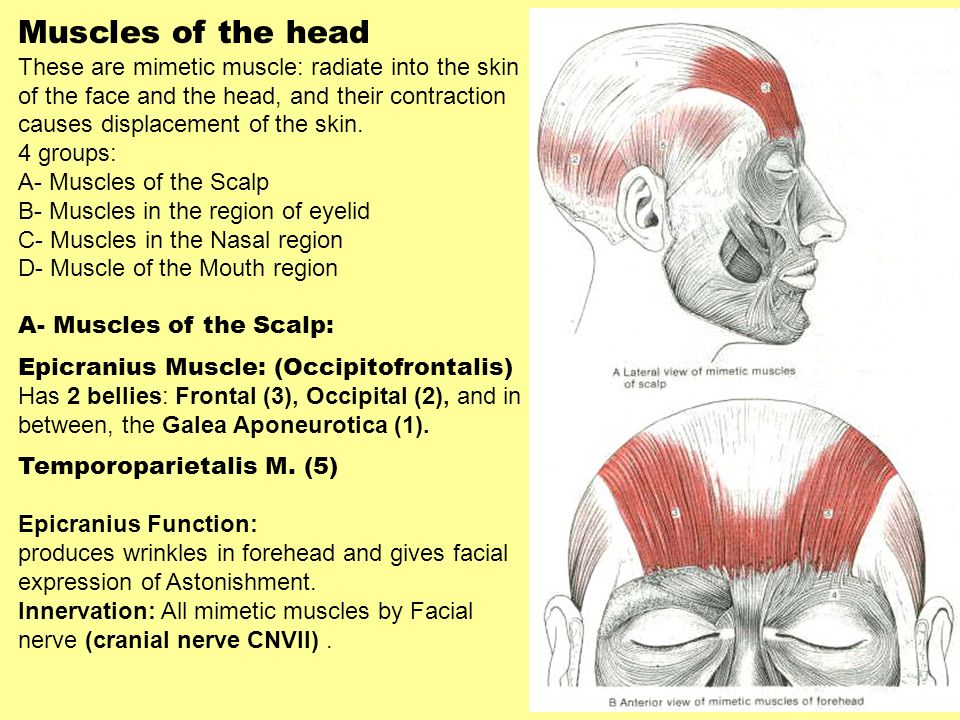 57-61. DOI.
57-61. DOI.
 R., Evzelman M.A., Chugunov A.V.
R., Evzelman M.A., Chugunov A.V. Accordingly, in relation to the trigeminal nerve, the area of \u200b\u200btheir location is the Gasser node. In the event of certain conditions favorable for the activation of the virus, a disease develops. It is believed that risk factors for its reactivation are advanced age or, conversely, infection in childhood (up to 18 months), a state of immunosuppression of various origins (acquired immunodeficiency, oncological diseases, immunosuppressive therapy), intrauterine contact with the varicella-zoster virus. The disease is realized in conditions of reduced cellular immunity due to various reasons.
Accordingly, in relation to the trigeminal nerve, the area of \u200b\u200btheir location is the Gasser node. In the event of certain conditions favorable for the activation of the virus, a disease develops. It is believed that risk factors for its reactivation are advanced age or, conversely, infection in childhood (up to 18 months), a state of immunosuppression of various origins (acquired immunodeficiency, oncological diseases, immunosuppressive therapy), intrauterine contact with the varicella-zoster virus. The disease is realized in conditions of reduced cellular immunity due to various reasons.
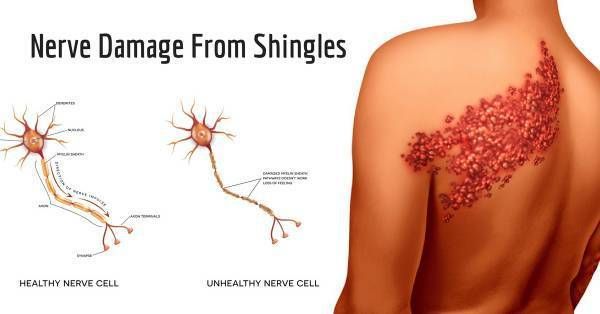

 Clinically, such a combination of pathophysiological processes is manifested by the occurrence of pain and the development of allodynia. Secondly, due to the degeneration of nociceptive neurons, deafferentation of the upstream sensory systems occurs, causing their hyperactivity. As a result of this, the formation of pain is observed, which, however, is not accompanied by allodynia. According to the authors, in one patient, a combination of both mechanisms is possible, which is the reason for the peculiarity of the pain syndrome and differences in the effectiveness of the therapy.
Clinically, such a combination of pathophysiological processes is manifested by the occurrence of pain and the development of allodynia. Secondly, due to the degeneration of nociceptive neurons, deafferentation of the upstream sensory systems occurs, causing their hyperactivity. As a result of this, the formation of pain is observed, which, however, is not accompanied by allodynia. According to the authors, in one patient, a combination of both mechanisms is possible, which is the reason for the peculiarity of the pain syndrome and differences in the effectiveness of the therapy. According to the authors of the study, pain syndrome of moderate intensity, not accompanied by subsequent development of postherpetic neuralgia, is observed in younger patients and is probably associated with extensive local tissue damage and inflammation in the presence of multiple lesions. The importance of the age factor as an important predictor of the development of pain syndrome should be emphasized in patients who had herpes zoster at the age of 9 years.0 years, postherpetic neuralgia occurs in about half of cases [5]. An unfavorable prognostic factor for the development of pain syndrome is the detection of the Varicella zoster virus in the blood.
According to the authors of the study, pain syndrome of moderate intensity, not accompanied by subsequent development of postherpetic neuralgia, is observed in younger patients and is probably associated with extensive local tissue damage and inflammation in the presence of multiple lesions. The importance of the age factor as an important predictor of the development of pain syndrome should be emphasized in patients who had herpes zoster at the age of 9 years.0 years, postherpetic neuralgia occurs in about half of cases [5]. An unfavorable prognostic factor for the development of pain syndrome is the detection of the Varicella zoster virus in the blood.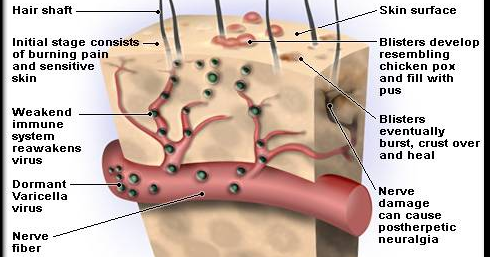 may increase the likelihood of developing a pain syndrome.
may increase the likelihood of developing a pain syndrome. This form of herpes infection is known as Ramsay Hunt syndrome. There are no convincing data on the prognostic significance of motor disorders in relation to the frequency and duration of the pain syndrome.
This form of herpes infection is known as Ramsay Hunt syndrome. There are no convincing data on the prognostic significance of motor disorders in relation to the frequency and duration of the pain syndrome. A later start of antiviral therapy (more than 72 hours after the appearance of rashes) provides a slight reduction in the healing time [11]. The use of antiviral drugs in the case of a small number of rashes (less than 50) is also not associated with a significant decrease in the likelihood of developing neuropathic pain syndrome.
A later start of antiviral therapy (more than 72 hours after the appearance of rashes) provides a slight reduction in the healing time [11]. The use of antiviral drugs in the case of a small number of rashes (less than 50) is also not associated with a significant decrease in the likelihood of developing neuropathic pain syndrome.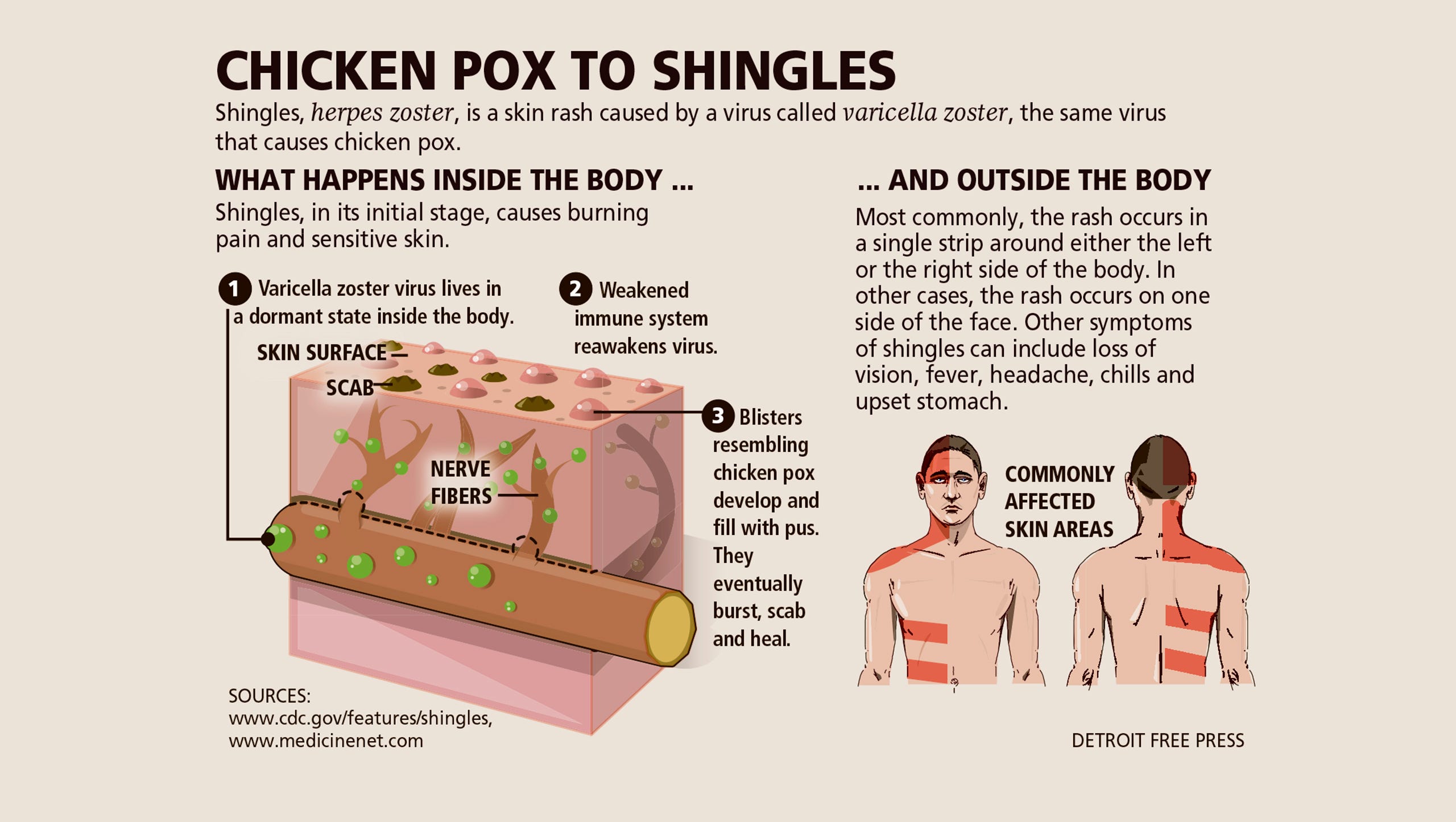 The drug Virdel is well tolerated, its simultaneous use with other drugs is possible.
The drug Virdel is well tolerated, its simultaneous use with other drugs is possible.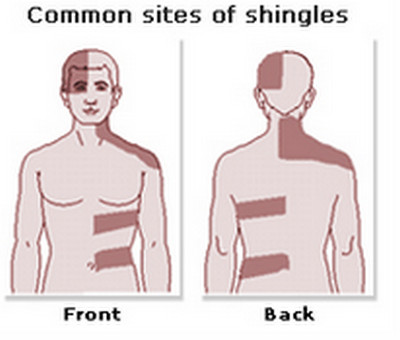 Their better tolerability is noted in comparison with antiepileptic drugs of previous generations. In a number of countries, weak or even strong opioids are used for postherpetic neuralgia.
Their better tolerability is noted in comparison with antiepileptic drugs of previous generations. In a number of countries, weak or even strong opioids are used for postherpetic neuralgia.